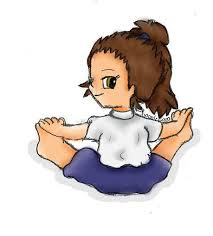Welcome to Electric Fun!
Primary 4 are going to show you what we have been learning in Science this week.
At the beginning of the week, we did some research on the computer which helped us to learn a little bit more about electricity. We visited http://www.hyperstaffs.info/science/work/child/main.html and play some games on this website.
Later on in the week, we were pretending to be scientists by doing a science experiment with electricity.
During this experiment, we had to make a circuit using: 1 x light bulb, 1 x light bulb holder, 1 battery and 3/4 x wires. We tried using different materials (e.g. ruler, pencil, 10p/2p coin, metal and plastic spoon, a nail and tin foil.) in between the circuit to check if the light bulb would go on. These special materials were called insulators and conductors.
An insulator means that the electricity won’t flow whereas a conductor lets the electricity flow round the circuit.
Before we started our experiment, we had to predict if the materials would turn on the light bulb or not.
Once we tested out the various materials, to see if the light bulb would turn on, we had to write our results into a table.
Goodbye for now.
See you next week!
Primary 4



![IMG_2399[1]](https://glow-prod-er.s3.eu-west-1.amazonaws.com/er/public/mchclclassof2018/uploads/sites/12464/2015/10/IMG_23991-300x224.jpg?X-Amz-Content-Sha256=UNSIGNED-PAYLOAD&X-Amz-Security-Token=IQoJb3JpZ2luX2VjEJX%2F%2F%2F%2F%2F%2F%2F%2F%2F%2FwEaCWV1LXdlc3QtMSJHMEUCIDtBCnr%2BlV7u%2FTi7rdHaJmtbSTL%2F5Ab2k4nH%2FHZRqrbCAiEAqaJlWLgaLO9BnMkLfSM0yxHn5ri7XlsTb4syzQcjB5AquQUIXhAFGgwyNzM1NzAxOTU0MzMiDPNRQJycR4RT0Wh%2FqCqWBV6%2BVEZvTMwfEF8Z4aqwoZ%2BSQxJW7PO4GxURQ3TSl3jbGOAqT%2Ftw4FZA08JkKcEvvijfz0T5DI%2FJnJM9WOnPGCPDoJvnUH3FyXzoB8TM25Qoh7Z%2BXGN2gz700LryYWH8IfEL2PvE9JTK%2BJuA6II1aB3tbTznAPF7yD3Bn0CfXTX9Lln7h7b4zZkkxm5RxV%2B692PkeOJiBVUg25YVbff0u0jv4wFdMpJzsooBM6GO4SRkSM6epJCjXW%2BcVwoat1THXDjflRDC8kibYZuSh3fNQVxL1Dx7C825h73X%2FH9o9%2BidB86qp1m1ydsFIF8vIxBqUZmGC%2BnnemS2AGuh5jp8yjsPFY9LtXNKMrPNFiBZXgG%2BKr5S5QKPPaujnecBcNURjzTWewlZnqPfQ%2FVcwozwdpu4v80JCUSM60%2F7yvZXZ75mhEjf3K0bnhV5If3M4qy%2F5KOzvdRGWvD4NoqL9tZhq8SDYhK65%2F75%2BJ5wQDQhIeY2QGRq6guDlXWE%2FZpSsG%2BSFZo0txRbwSdeo9aMf8JmBX2M4mlr%2BsFrAYeKTl8pBgte%2BFsHwFlPrOotpJZKpz7jpc6sCJJDsFcMLWBG4PSZj5Jdy6QxeSZHIV7v11sflwFVj4uqLReifRTP9ZtQA7LOPqHQsja1w6SP%2Ft4a%2FxvMYMKFa9xS6x74OYabDa%2BXiEVlX9XUQiVi8EmSUIPkcH5k99KLV81TL5eiOopkK7W5LYQUQgKm4J6Rx8arLdQ9g9CznI6kCg5lpQP3TqrqYP2riXia%2Ben1ktwgwEILw4PPfqzjaEHe3H61ytIyys1cvlIoRwBqkZR9k20XGx4Po4FplIvpcXFPkkcH3%2Bo3ToJbedAu7DMQTBoRtsQKhyeryjf1hTHIsvAhMKCBi7sGOrEBUbivI%2FkauzXphSR9CotlvVZXgfrg20RRlLpESdPyFBOKwIleMgXpxB6QuPmq03UAUMJ1wJCYOwnrHmAK38bYxR5j7yItLIFTqhjpVr0Ql1xTSG0Wzpm2f%2FFRdc6XBmiBXjNMDu1pCXI9wi8J4px710W6DM7uSrwl8q6fLiwv5xsh6K%2BDGlqwHo7%2F9Sk0J%2ByYYsIreMcMyPMa%2BkfCH7p3MRJ7Pw03zto7h9s%2B7nknWzWa&X-Amz-Algorithm=AWS4-HMAC-SHA256&X-Amz-Credential=ASIAT7MQN47UTBOELPYJ%2F20241218%2Feu-west-1%2Fs3%2Faws4_request&X-Amz-Date=20241218T125235Z&X-Amz-SignedHeaders=host&X-Amz-Expires=900&X-Amz-Signature=1f74b33b51da3c026a2c4987d3b4677688508e30a7ba41051bceabd7257fe090)




![IMG_2239[1]](https://glow-prod-er.s3.eu-west-1.amazonaws.com/er/public/mchclclassof2018/uploads/sites/12464/2015/04/IMG_22391-300x225.jpg?X-Amz-Content-Sha256=UNSIGNED-PAYLOAD&X-Amz-Security-Token=IQoJb3JpZ2luX2VjEJX%2F%2F%2F%2F%2F%2F%2F%2F%2F%2FwEaCWV1LXdlc3QtMSJHMEUCIDtBCnr%2BlV7u%2FTi7rdHaJmtbSTL%2F5Ab2k4nH%2FHZRqrbCAiEAqaJlWLgaLO9BnMkLfSM0yxHn5ri7XlsTb4syzQcjB5AquQUIXhAFGgwyNzM1NzAxOTU0MzMiDPNRQJycR4RT0Wh%2FqCqWBV6%2BVEZvTMwfEF8Z4aqwoZ%2BSQxJW7PO4GxURQ3TSl3jbGOAqT%2Ftw4FZA08JkKcEvvijfz0T5DI%2FJnJM9WOnPGCPDoJvnUH3FyXzoB8TM25Qoh7Z%2BXGN2gz700LryYWH8IfEL2PvE9JTK%2BJuA6II1aB3tbTznAPF7yD3Bn0CfXTX9Lln7h7b4zZkkxm5RxV%2B692PkeOJiBVUg25YVbff0u0jv4wFdMpJzsooBM6GO4SRkSM6epJCjXW%2BcVwoat1THXDjflRDC8kibYZuSh3fNQVxL1Dx7C825h73X%2FH9o9%2BidB86qp1m1ydsFIF8vIxBqUZmGC%2BnnemS2AGuh5jp8yjsPFY9LtXNKMrPNFiBZXgG%2BKr5S5QKPPaujnecBcNURjzTWewlZnqPfQ%2FVcwozwdpu4v80JCUSM60%2F7yvZXZ75mhEjf3K0bnhV5If3M4qy%2F5KOzvdRGWvD4NoqL9tZhq8SDYhK65%2F75%2BJ5wQDQhIeY2QGRq6guDlXWE%2FZpSsG%2BSFZo0txRbwSdeo9aMf8JmBX2M4mlr%2BsFrAYeKTl8pBgte%2BFsHwFlPrOotpJZKpz7jpc6sCJJDsFcMLWBG4PSZj5Jdy6QxeSZHIV7v11sflwFVj4uqLReifRTP9ZtQA7LOPqHQsja1w6SP%2Ft4a%2FxvMYMKFa9xS6x74OYabDa%2BXiEVlX9XUQiVi8EmSUIPkcH5k99KLV81TL5eiOopkK7W5LYQUQgKm4J6Rx8arLdQ9g9CznI6kCg5lpQP3TqrqYP2riXia%2Ben1ktwgwEILw4PPfqzjaEHe3H61ytIyys1cvlIoRwBqkZR9k20XGx4Po4FplIvpcXFPkkcH3%2Bo3ToJbedAu7DMQTBoRtsQKhyeryjf1hTHIsvAhMKCBi7sGOrEBUbivI%2FkauzXphSR9CotlvVZXgfrg20RRlLpESdPyFBOKwIleMgXpxB6QuPmq03UAUMJ1wJCYOwnrHmAK38bYxR5j7yItLIFTqhjpVr0Ql1xTSG0Wzpm2f%2FFRdc6XBmiBXjNMDu1pCXI9wi8J4px710W6DM7uSrwl8q6fLiwv5xsh6K%2BDGlqwHo7%2F9Sk0J%2ByYYsIreMcMyPMa%2BkfCH7p3MRJ7Pw03zto7h9s%2B7nknWzWa&X-Amz-Algorithm=AWS4-HMAC-SHA256&X-Amz-Credential=ASIAT7MQN47UTBOELPYJ%2F20241218%2Feu-west-1%2Fs3%2Faws4_request&X-Amz-Date=20241218T125236Z&X-Amz-SignedHeaders=host&X-Amz-Expires=900&X-Amz-Signature=09b4a3f733f09cd7e4e99cbb752e3b00f829402bc61363ee2042f48da6b975bc)
![IMG_2238[1]](https://glow-prod-er.s3.eu-west-1.amazonaws.com/er/public/mchclclassof2018/uploads/sites/12464/2015/04/IMG_22381-300x225.jpg?X-Amz-Content-Sha256=UNSIGNED-PAYLOAD&X-Amz-Security-Token=IQoJb3JpZ2luX2VjEJX%2F%2F%2F%2F%2F%2F%2F%2F%2F%2FwEaCWV1LXdlc3QtMSJHMEUCIDtBCnr%2BlV7u%2FTi7rdHaJmtbSTL%2F5Ab2k4nH%2FHZRqrbCAiEAqaJlWLgaLO9BnMkLfSM0yxHn5ri7XlsTb4syzQcjB5AquQUIXhAFGgwyNzM1NzAxOTU0MzMiDPNRQJycR4RT0Wh%2FqCqWBV6%2BVEZvTMwfEF8Z4aqwoZ%2BSQxJW7PO4GxURQ3TSl3jbGOAqT%2Ftw4FZA08JkKcEvvijfz0T5DI%2FJnJM9WOnPGCPDoJvnUH3FyXzoB8TM25Qoh7Z%2BXGN2gz700LryYWH8IfEL2PvE9JTK%2BJuA6II1aB3tbTznAPF7yD3Bn0CfXTX9Lln7h7b4zZkkxm5RxV%2B692PkeOJiBVUg25YVbff0u0jv4wFdMpJzsooBM6GO4SRkSM6epJCjXW%2BcVwoat1THXDjflRDC8kibYZuSh3fNQVxL1Dx7C825h73X%2FH9o9%2BidB86qp1m1ydsFIF8vIxBqUZmGC%2BnnemS2AGuh5jp8yjsPFY9LtXNKMrPNFiBZXgG%2BKr5S5QKPPaujnecBcNURjzTWewlZnqPfQ%2FVcwozwdpu4v80JCUSM60%2F7yvZXZ75mhEjf3K0bnhV5If3M4qy%2F5KOzvdRGWvD4NoqL9tZhq8SDYhK65%2F75%2BJ5wQDQhIeY2QGRq6guDlXWE%2FZpSsG%2BSFZo0txRbwSdeo9aMf8JmBX2M4mlr%2BsFrAYeKTl8pBgte%2BFsHwFlPrOotpJZKpz7jpc6sCJJDsFcMLWBG4PSZj5Jdy6QxeSZHIV7v11sflwFVj4uqLReifRTP9ZtQA7LOPqHQsja1w6SP%2Ft4a%2FxvMYMKFa9xS6x74OYabDa%2BXiEVlX9XUQiVi8EmSUIPkcH5k99KLV81TL5eiOopkK7W5LYQUQgKm4J6Rx8arLdQ9g9CznI6kCg5lpQP3TqrqYP2riXia%2Ben1ktwgwEILw4PPfqzjaEHe3H61ytIyys1cvlIoRwBqkZR9k20XGx4Po4FplIvpcXFPkkcH3%2Bo3ToJbedAu7DMQTBoRtsQKhyeryjf1hTHIsvAhMKCBi7sGOrEBUbivI%2FkauzXphSR9CotlvVZXgfrg20RRlLpESdPyFBOKwIleMgXpxB6QuPmq03UAUMJ1wJCYOwnrHmAK38bYxR5j7yItLIFTqhjpVr0Ql1xTSG0Wzpm2f%2FFRdc6XBmiBXjNMDu1pCXI9wi8J4px710W6DM7uSrwl8q6fLiwv5xsh6K%2BDGlqwHo7%2F9Sk0J%2ByYYsIreMcMyPMa%2BkfCH7p3MRJ7Pw03zto7h9s%2B7nknWzWa&X-Amz-Algorithm=AWS4-HMAC-SHA256&X-Amz-Credential=ASIAT7MQN47UTBOELPYJ%2F20241218%2Feu-west-1%2Fs3%2Faws4_request&X-Amz-Date=20241218T125236Z&X-Amz-SignedHeaders=host&X-Amz-Expires=900&X-Amz-Signature=24b19c1aeff9fc09242e0daa7a6b8372edc9384e9ffe718733dffbb3899cc4bc)

